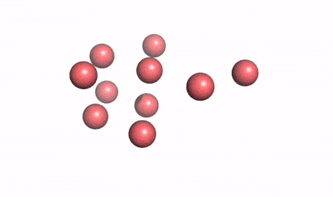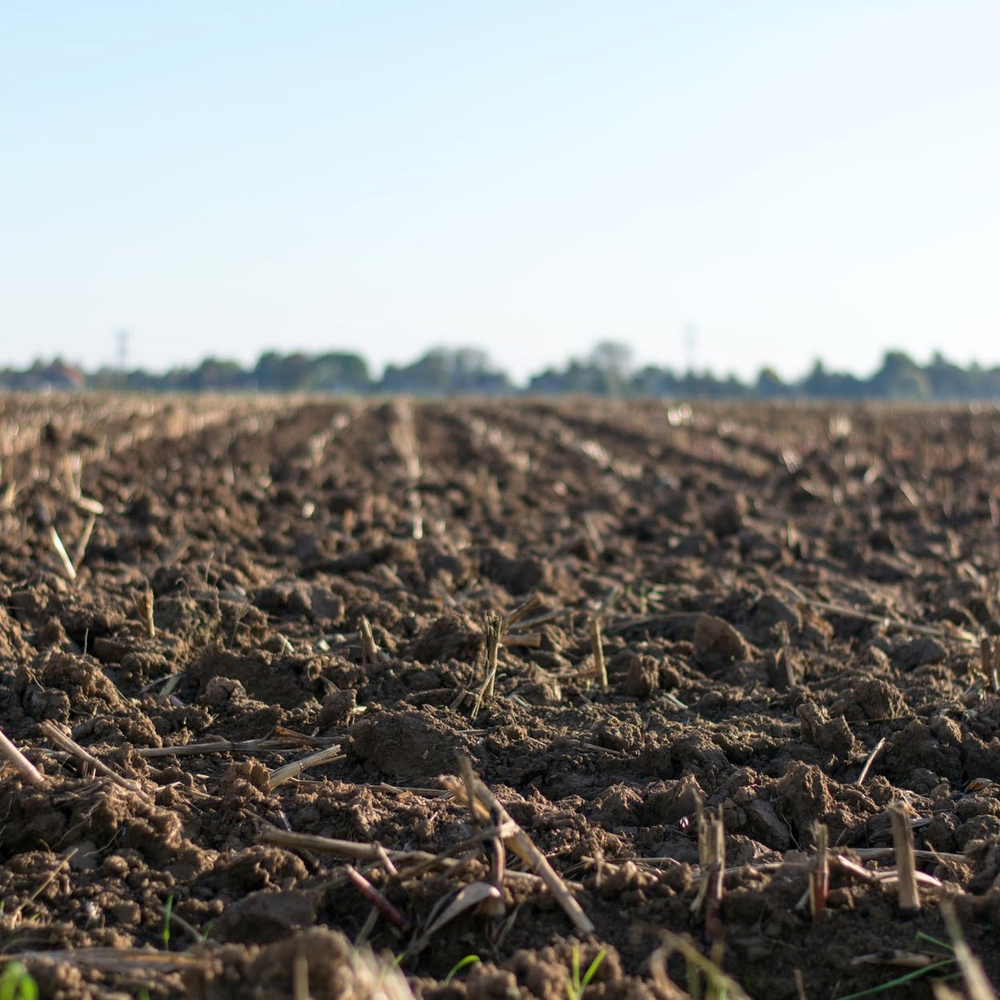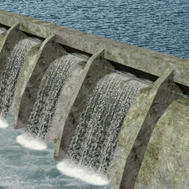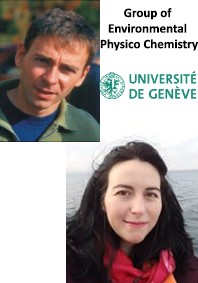Heteroaggregation rate calculation
In natural environments, \(\small C_{SPM}\), the concentration of natural suspended particulate matter (SPM) is high compared to expected ENPs concentration, \(\small C_{ENP}\), making heteroaggregation the main process of aggregation processes. (This said, for the purposes of rate calculation, homoaggregation can be treated as a special case of heteroaggregation, and the execution below can be followed.)
The decrease of the concentration of ENPs of size \(i\), \(C_{ENP}^i\), as a function of time \(t\) as a result of heteroaggregation, can be described as follows:
|
\(\large \frac{dC_{ENP}^{i}}{dt}=-C_{ENP}^{i}(t).{\sum }_{j=1}^{n_{size}^{SPM}}k_{het*}^{i,j}\)
\(\large k_{het*}^{i,j}\) is described as follows:
\(\large k_{het*}^{i,j} = \alpha _{´hetero}.k_{coll}^{i,j}.C_{SPM}^{j}\) |
 |
where \(\large k_{het*}^{i,j}\) represents the heteroaggregation rate constant between one ENP of size \(i\) and one suspended particle of size \(j\), \(a_{hetero}\) the attachment efficiency between one ENP of size \(i\) and one SPM of size \(j\), which is for example related to particle surface properties and medium chemistry such as the ionic strength, \(\large C_{SPM}^{j}\) the suspended particulate matter concentration of size \(j\), and \(\large k_{coll}^{i,j}\) the collision rate constant between \(\large i\) and \(\large j\) which is related to the particle diffusion coefficients and nature of the flow (perkinetic, orthokinetic, differential settling).
Execution
\(\large k_{het*}^{i,j}\) can be measured from an experimental point of view by measuring the decrease with time of the ENPs concentration or kinetics of heteroaggregate formation. Once the heteroaggregation rate constant is obtained, \(a_{hetero}\)
\(\large k_{het*}^{i,j}\) can also be calculated using Monte Carlo simulations, in which individual attachment efficiencies are introduced as input parameters and by measuring the decrease of the number of isolated ENPs with time or by considering the time variation of heteroaggregates. Therefore, from a set of attachment efficiencies and given ENP/SPM particle concentration ratio, the heteroaggregation rate constant can be calculated.
Used for |
Occurs in |
 |
 |
 |
 |
| Heteroaggregation | Soil | Water | Air |
Read more |
Read also |
|
Consult the NanoFASE Library to see abstracts of these deliverable reports: Deliverable 8.1 Alignment between Model Requirements and Experimental Procedures Deliverable 8.3 Transformation and behaviour of NMs under freshwater conditions in support of modelling Deliverable 8.6 Description of model framework for agglomeration and removal of NMs |
Elimelech M, et al. (1995) Particle Deposition and Aggregation: Measurement, Modeling and Simulation. Butterworth-Heinemann. Praetorius A, et al. (2012) Development of Environmental Fate Models for Engineered Nanoparticles. A case study of TiO2 Nanoparticles in the Rhine River. Environmental science & technology. 46: 6705-6713. http://doi.org/10.1021/es204530n Clavier, A., Praetorius, A., Stoll, S., 2019, Determination of nanoparticle heteroaggregation attachment efficiencies and rates in presence of natural organic matter monomers. Monte Carlo modelling: Science of the Total Environment, v. 650, p. 530-540. |
Contact
 Serge Stoll
Serge Stoll
Serge.Stoll@unige.ch
Marianne Seijo
Marianne.Seijo@unige.ch
Group of Environmental Physico
Chemistry, University of Geneva
